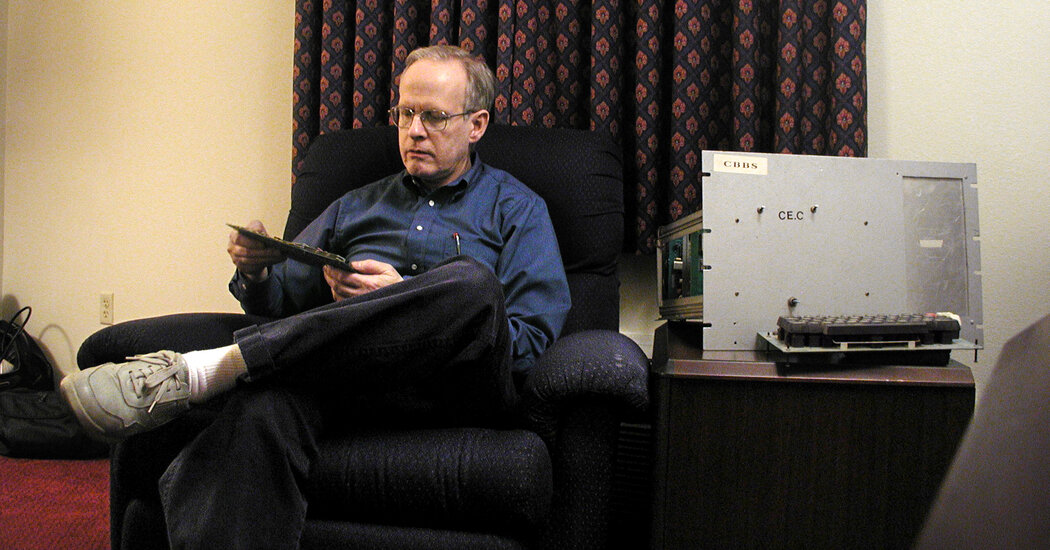Housebound during a 1978 blizzard, he and a friend began devising the first computer bulletin board, a forerunner of online services like Reddit, TikTok and Facebook.
Ward Christensen, a computer scientist who helped build the first online bulletin board, a forerunner of the internet messaging apps and social media services that would become a staple of modern life, died on Oct. 11 at his home in Rolling Meadows, Ill. He was 78.
His brother, Donald, said the cause was a heart attack.
In the summer of 1975, while working as an engineer at an IBM office in Chicago, Mr. Christensen joined a home computer club called the Chicago Area Computer Hobbyists’ Exchange, or CACHE. Through the club, he met a fellow hobbyist named Randy Suess. A few years later, the two began discussing how they might build a system that could send information between computers via telephone lines.
Then, on Jan. 16, 1978, a blizzard hit Chicago, covering the city in 40 inches of snow and stranding Mr. Christensen at his home in the suburbs. He phoned Mr. Suess, suggesting that they use the time to start building their messaging system. He wondered if they should get help from other club members, but Mr. Suess argued that involving more people would slow the project down.
“Forget the club. It would just be management by committee,” Mr. Suess said, as Mr. Christensen recalled their conversation to The New York Times in 2009. “It’s just me and you. I will do the hardware, and you will do the software.”
Using a spare computer, some software and a novel device called a modem, which could send and receive data across phone lines, they eventually jury-rigged a machine that allowed club members to trade information. Using their own home computers, they could remotely connect to the machine and upload messages for others to read, including meeting notices and ideas for new projects.
Mr. Christensen saw this as an electronic version of the wall-mounted bulletin boards inside grocery stores, where anyone could post paper fliers that advertised local concerts or sought babysitters. “I patterned the software after the cork-board-and-push-pins type of bulletin board,” he wrote a decade later.
